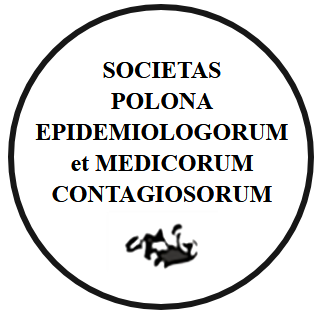ABSTRACT
The objective of this article is description of the important source of data on hospitalised morbidity collected in Poland within the frameworks of public statistics, and also underlying the significance of the quality of data collected at the hospital level for the purpose of the practical application of them.
The Nationwide General Hospital Morbidity Study has been conducted by the Department of Population Health Monitoring and Analysis of the NIPH-NIH for more than 40 years within the frameworks of the Programme of Statistical Surveys of Official Statistics. Since the year 2000, it has had a complete character, collecting individual data for all cases of hospitalisation in Poland within the scope compliant with the MZ/Szp-11 form, among others, sex, age, place of residence of a patient, data on hospital, information about the course of treatment (length of stay in hospital, principal diagnosis and comorbidity, applied medical procedures, the mode of admission and discharge). The collected data are anonymous. In the recent years, annually, more than 8 million of the cases of hospitalisation have been documented.
Almost all obliged hospitals (96%) participate in the study. Some weak point is the completeness of submitted data, in particular, regarding information about the external causes of injuries and poisonings (in the year 2017, 27% of the required data were missing). Interestingly, a high level of missing data is generated by a comparatively small number of hospitals. Significant differences are observed in the quality of data depending on the voivodship of hospital location.
The collected data render it possible to, among others, determine the frequency of hospitalisations due to particular causes taking under consideration the localisation of a hospital, and also the sex, age and the place of residence of patients, the analysis of the duration of hospital stay or in-hospital fatality. The aggregated results are reported to international databases (WHO, OECD, Eurostat), and support the administrative authorities of various levels. They are also a basis for numerous published scientific papers. The most important results of routine analyses are presented of the web page of the Study (http://www.statystyka1.medstat.waw.pl/).
STRESZCZENIE
Celem pracy jest przekazanie wiedzy o zasobach i ograniczeniach danych na temat chorobowości hospitalizowanej w Polsce, dostępnych w ramach statystyki publicznej, a także pokazanie znaczenia jakości danych zbieranych na poziomie szpitali dla ich praktycznego wykorzystania.
Ogólnopolskie Badanie Chorobowości Szpitalnej Ogólnej jest prowadzone w Zakładzie Monitorowania i Analiz Stanu Zdrowia Ludności NIZP-PZH w ramach Programu Badań Statystycznych Statystyki Publicznej. Od 2000 r. ma ono charakter pełny – gromadzi przekazywane przez szpitale jednostkowe dane o wszystkich przypadkach hospitalizacji w zakresie zgodnym z formularzem MZ/Szp-11, obejmujące m. in. płeć wiek, miejsce zamieszkania pacjenta, dane placówki, informacje o przebiegu leczenia (okres pobytu w szpitalu, choroba zasadnicza i współwystępujące, zastosowane procedury medyczne, tryb przyjęcia i wypisu). Dane te mają charakter anonimowy. W ostatnich latach rocznie dokumentowanych jest ponad 8 mln przypadków hospitalizacji, od 2000r. zgromadzono ponad 120 mln rekordów.
W Badaniu bierze udział 96% zobowiązanych do tego placówek. Jego słabą stroną jest kompletność nadsyłanych danych zwłaszcza w zakresie informacji o zewnętrznych przyczynach urazów i zatruć (w 2017 roku 27% braków). Braki te generuje stosunkowo niewielka liczba szpitali. Obserwuje się znaczne różnice w jakości danych pochodzących z poszczególnych województw.
Zbierane dane umożliwiają m. in. wyznaczenie częstości hospitalizacji z poszczególnych przyczyn z uwzględnieniem lokalizacji szpitala oraz płci, wieku i miejsca zamieszkania pacjentów, analizę długości hospitalizacji czy śmiertelności szpitalnej. Wyniki są wykorzystywane do celów statystycznych, zasilają międzynarodowe bazy danych (WHO, OECD, Eurostat), wspierają władze administracyjne różnego szczebla. Są również podstawą wielu prac naukowych. Najważniejsze wyniki analiz rutynowych przedstawiane są na stronie internetowej Badania (http://www.statystyka1.medstat.waw.pl/).
You can change cookies settings in your browser. Restricted use of cookies in the browser configuration may affect some functionalities of the website.





